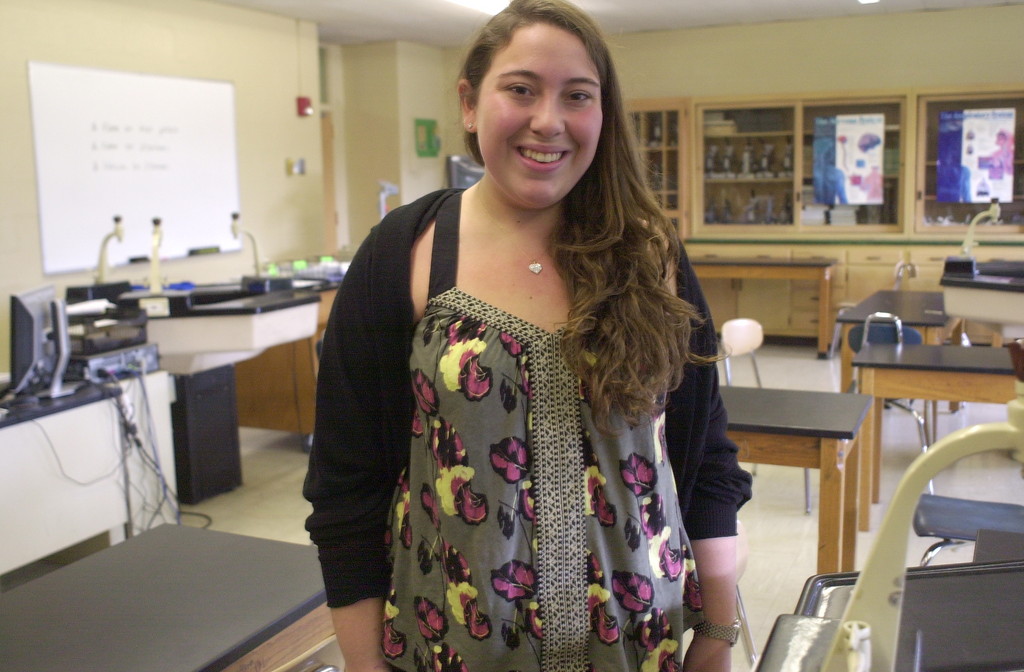Calhoun senior gets up-close look at the mouse brain
Student selected for prestigious research program at Cold Spring Harbor lab
For the past two months, Calhoun High School senior Melissa Gluck has seen the mouse brain through one very powerful lens –– the Brain Architecture Project at Cold Spring Harbor Laboratory.
The 17-year-old from Merrick was selected this year as one of 10 scholars in the laboratory’s prestigious Partners for the Future Program, which pairs the students with working scientists. Program participants assist their mentors in their research, putting in an average of 10 hours per week at the lab.
Gluck is studying the mouse brain up close –– really close. After scientists inject tracers into a mouse’s four-gram brain, they slice tissue into ultra-thin strips for examination under a microscope. Bit by bit, the tracers allow the scientists to catalogue the maze of neural circuitry that, at first glance, appears to be nothing more than a jumble of unconnected wires, but which, in reality, is a complex assemblage that most of the time harmoniously controls each and every of the mouse’s actions.
Dr. Partha Mitra, leader of the Brain Architecture Project, said he hopes to compile a “first-draft” circuit map of the mouse brain within two to three years, according to Science Daily magazine. Thus far, only parts of the mouse’s neural network have been mapped in “an unsystematic manner.”
With neuroscientist Hillary Cox as her mentor, and the “Mouse Brain Atlas” as her guide, Gluck is preparing slides of the mouse-brain tissue, which are then digitized and catalogued. She will be working on the project through March, when she will present a paper on her research experiences at Cold Spring Harbor Laboratory.
Cataloguing a mammalian brain in its entirety, which was previously impossible because there simply wasn’t enough computer storage to complete the job, holds great promise in explaining the root causes of neurodevelopmental illnesses such as autism, schizophrenia, bipolar disorder and obsessive-compulsive disorder, according to Mitra.
“There’s so much we don’t know,” said Gluck.

 60.0°,
Overcast
60.0°,
Overcast 




